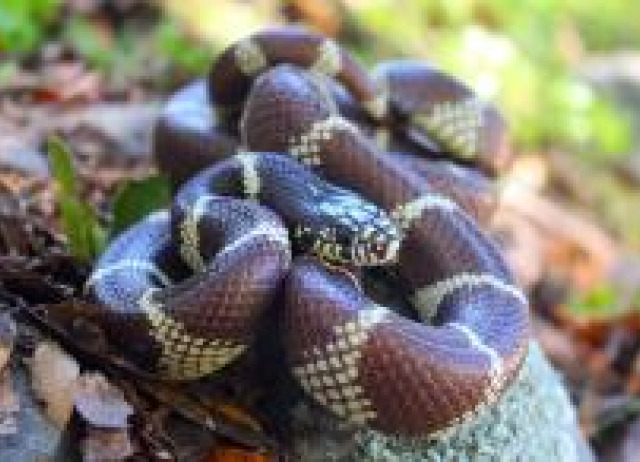California kingsnake in the Canary Islands
New project to enhance scientific knowledge about the California kingsnake in the Canary Islands
The research project Combating the invasion of the California kingsnake in the Canary Islands: research applied to management, lead by Marta López Darias, researcher of the Institute of Natural Products and Agrobiology, has received one of the five research grants that the BBVA Foundation gives each year to scientific research teams in ecology and conservation biology.
The Foundation thus recognises the excellence of the research carried out by the IPNA-CSIC Group Island Ecology and Evolution, whose main objectives are to analyse the use of the habitat and the reproductive strategies of the California kingsnake in Gran Canaria – so as to improve the effectiveness and efficiency of actions aimed at controlling the invasión –, as well as to quantify the impact of the snake on the native communities of Gran Canaria and to establish conservation strategies to minimise these negative repercussions.
Among the different predators introduced into insular ecosystems, snakes are possibly one of the most pernicious, as they cause a drastic reduction or extinction of native species in a considerable number of cases. This results in alterations within the communities and leads to the disruption of key ecological processes for these ecosystems.
The California kingsnake Lampropeltis californiae was first located on the island of Gran Canaria in 1998 and was confirmed as a naturalised species on that same island in 2007. In addition to the first groups initially detected in Telde and Valsequillo, further sightings revealed the presence of the species in the area around Gáldar.
This led to the implementation of various programmes aimed at controlling the expansion of L. californiae and encouraging social awareness regarding exotic species on the island. Despite these actions, the species has kept spreading throughout the island and in recent years new population centres have been detected in the municipality of San Bartolomé de Tirajana and, more recently, the surroundings of Las Palmas de Gran Canaria.
This project is in line with the top priority given by national and regional plans to the problems arising from the introduction of the species L. californiae into the island of Gran Canaria. All actions will be carried out with the utmost collaboration between the CSIC and the organisations that have been working against this invasive species up to now (Government of the Canary Islands, Cabildo de Gran Canaria and GESPLAN).
